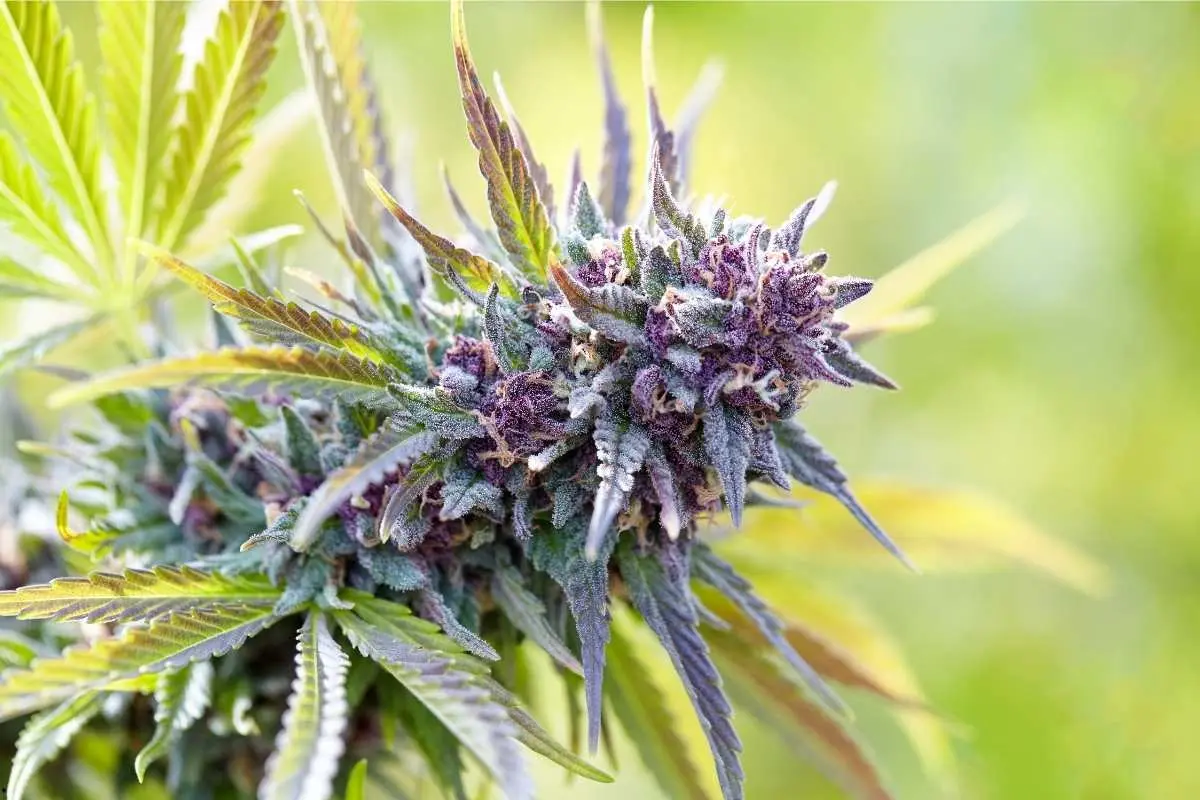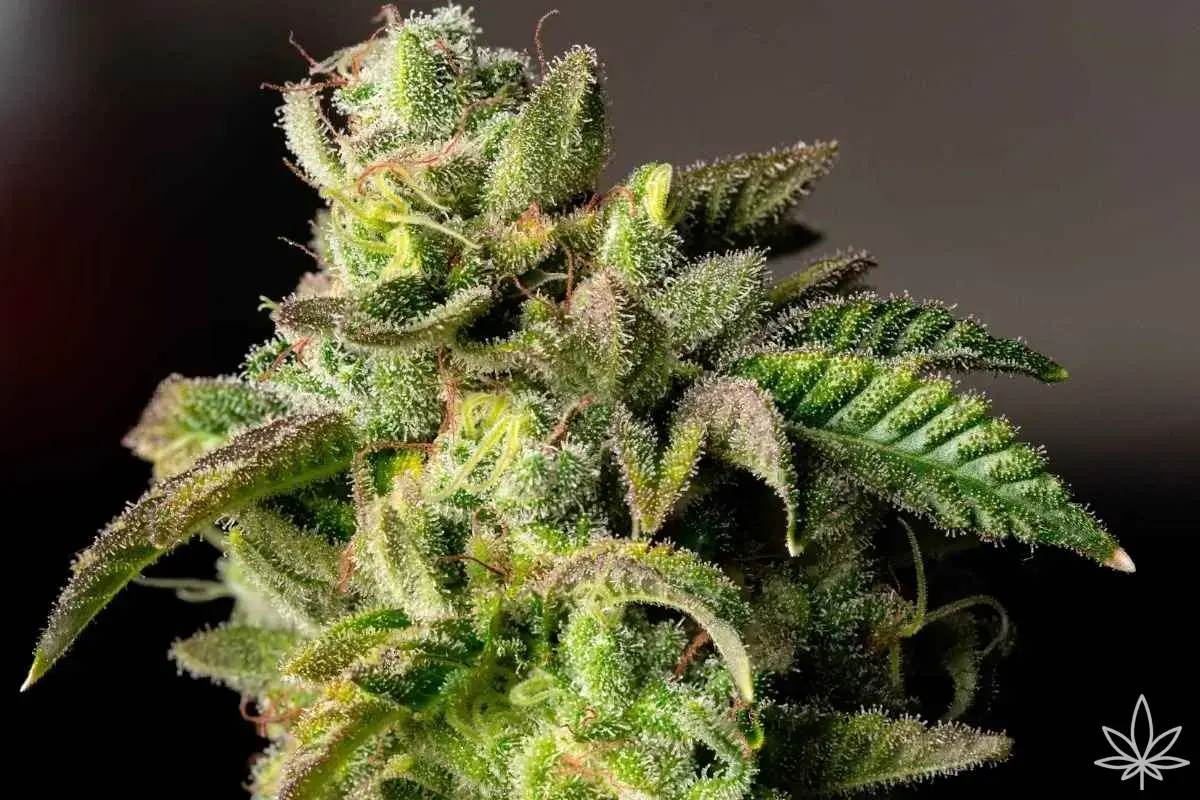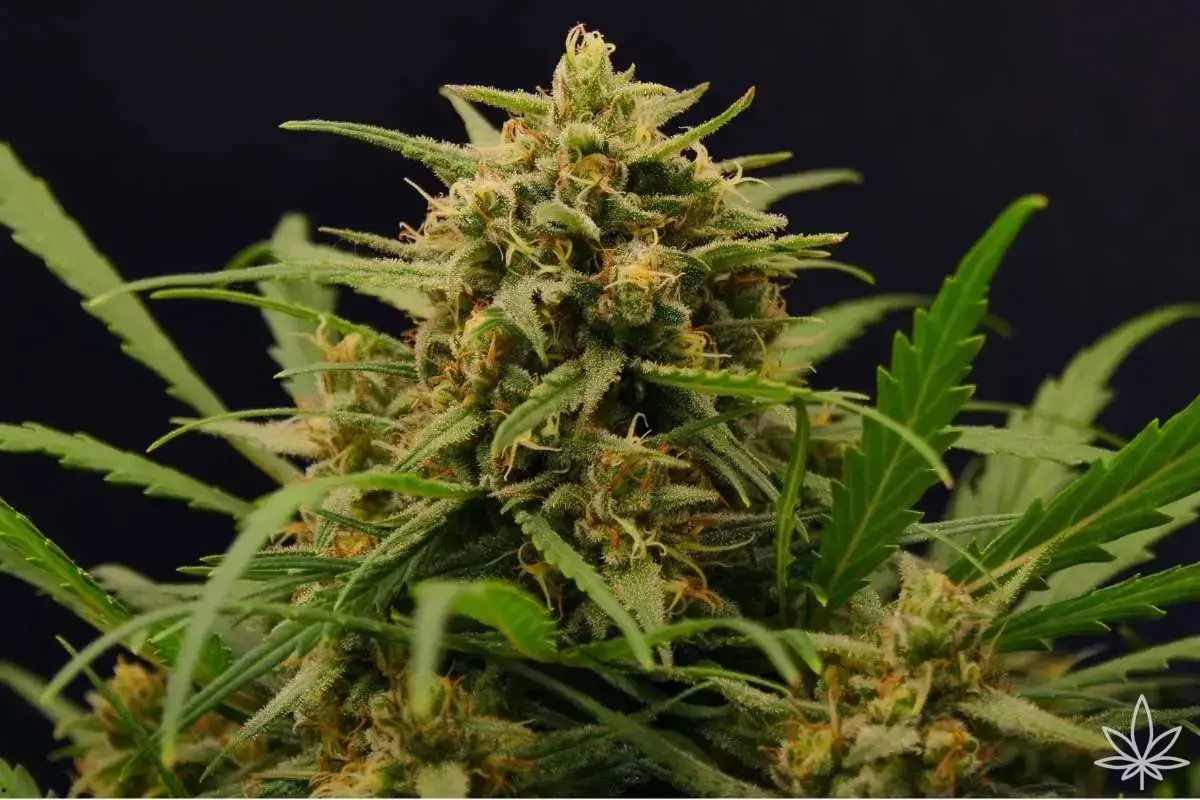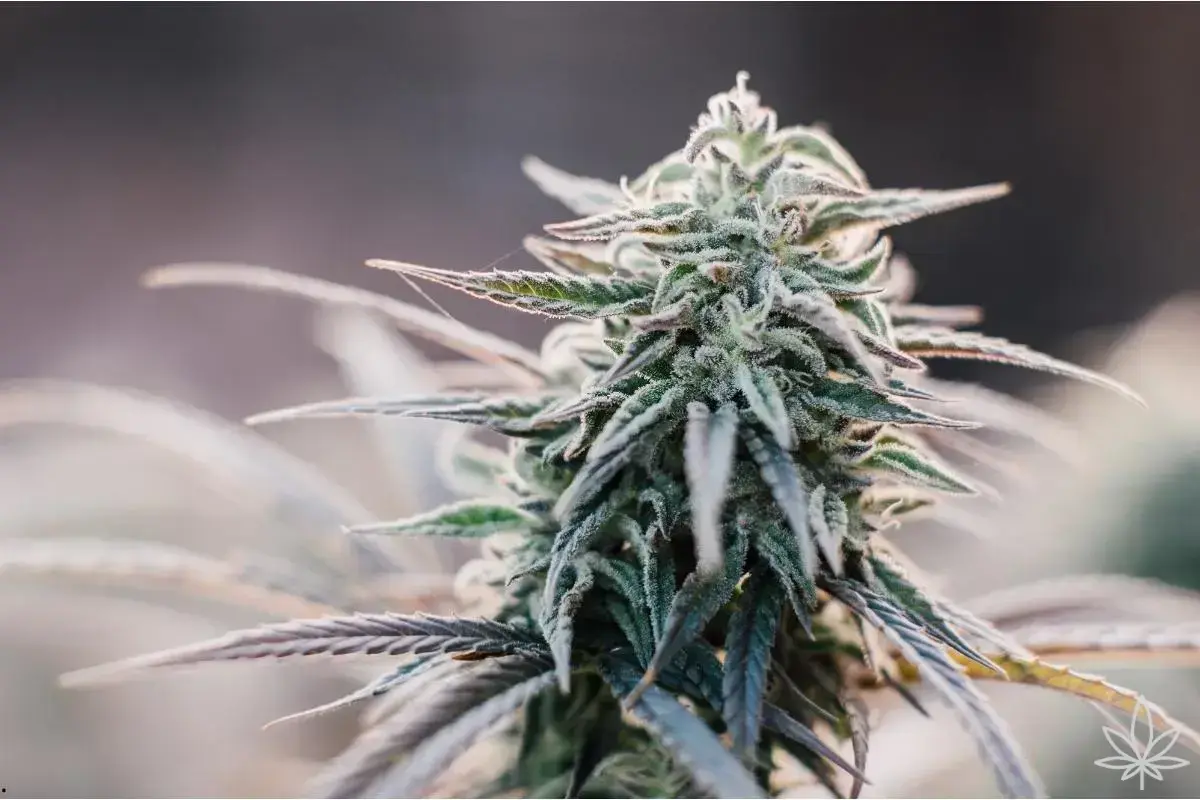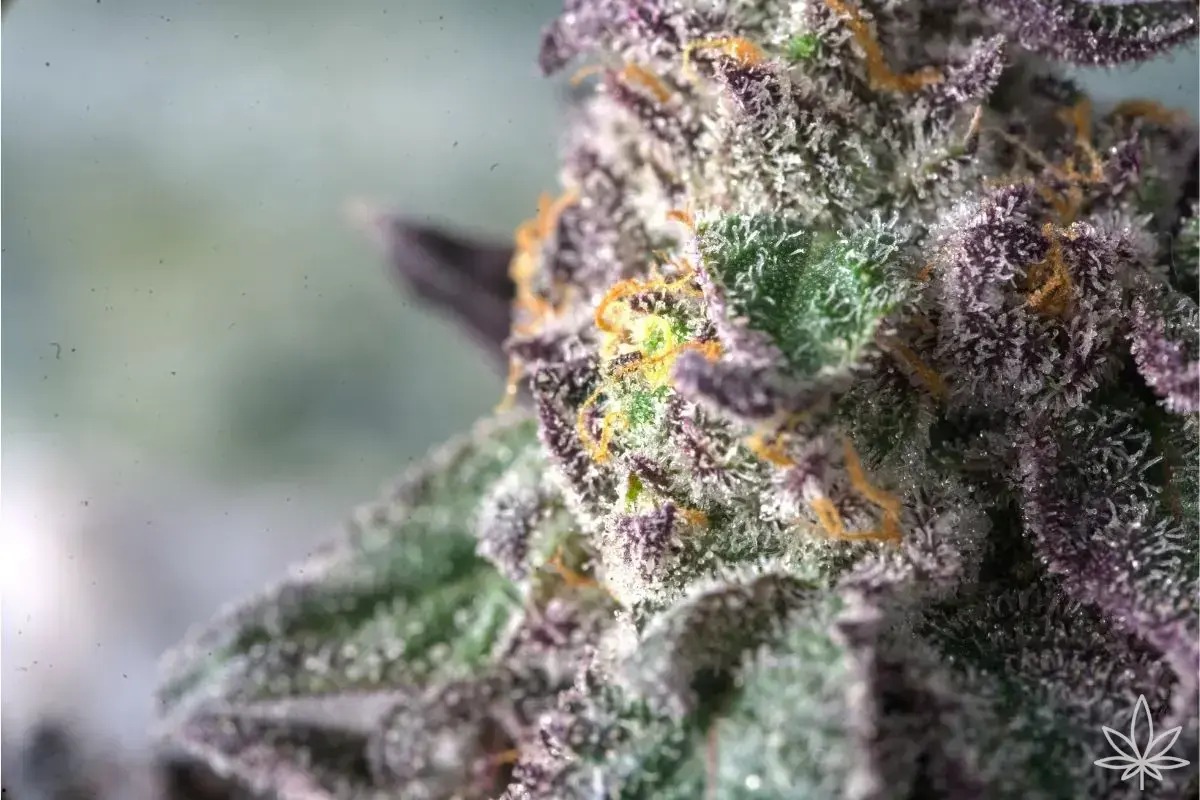Purple Haze is a name that carries an old-school aura on its own. You can often identify this profile by scent before reading any label: incensey, woodsy, with a clear fruity refrain. And yes, flowers may turn purple—but remember: not every purple plant is Purple Haze, and not every Purple Haze must be purple. Color comes from genetics and anthocyanins, not the name itself.
Why the status?
Purple Haze stems from the classic Haze family—sativa lines tied for decades to a clear head, an airy, spatial nose, and an “open” aromatic character. It’s one of those cultivars where character trumps fashion: a recognizable bouquet, energy, and that specific lightness that doesn’t blur the picture.
What it looks like — a botanical notebook
In collector terms, Purple Haze shows a slimmer, sativa-leaning architecture:
- Calyxes form elongated spears and turrets; some phenotypes show a touch of foxtailing.
- Pistils start creamy white, later shifting to lavender, honey, and russet shades.
- Color ranges from olive green to purples when anthocyanin-rich phenotypes meet conditions that express them.
- Trichomes are abundant, glassy-silver, sometimes contrasting with darker calyx tissue.
Purple tones here are the effect of anthocyanins—plant pigments. Their “loudness” depends on phenotype and tissue maturity.
Aroma & flavor — incense, fruit, forest
On the nose, a incense-woody core with cypress and juniper lift (often a sign of terpinolene), underpinned by peppery spice (caryophyllene) and resinous pine (pinene). In the background: purple fruits (blackberry, currant), sometimes citrus zest (limonene) and a floral veil (linalool). On the palate—dry-fruity, with a long, clean finish.
How it “carries” — grower plain-speak
Descriptions converge: a clear mental lift, a gentle psychedelic twist to color and sound perception, and soft bodily release without a heavy anchor. Think opening space rather than warming the armchair. Reactions are individual—this is sensory language.
Terpenes & phenotypes — where paths diverge
Purple Haze keeps a tight Haze corridor yet tends to split two ways:
- Incense–forest (terpinolene/pinene): fresh, spacious, “airy.”
- Fruit–floral (linalool/ocimene/limonene): juicier, with lavender–berry aura.
Common in the chemical lineup: terpinolene, pinene, ocimene, caryophyllene, limonene, sometimes linalool and humulene.
Presentation cues — spotting a good batch
- Trichome sheen: glassy, even frost without dull islands.
- Nose after grinding: incense–forest up front, purple fruit and citrus knit the background; clean aroma without raw green edges.
- Structure: slender yet fleshy calyxes—more than just fluff; limited sugar leaf.
- Color: purples may appear but aren’t required—profile over paint.
A “botanical” note on character
Sativa architecture here means looser, more breathable floral mass and a pronounced, complex terpene bouquet. This is a cultivar where clean surroundings and aromatic clarity elevate the experience to “incense + purple fruit” rather than generic green.
Who is Purple Haze for?
For seekers of a daytime, creative sativa with a distinct incense-fruit character; for collectors who enjoy anthocyanin play; for fans of the classic Haze “breath” over sugary desserts.

